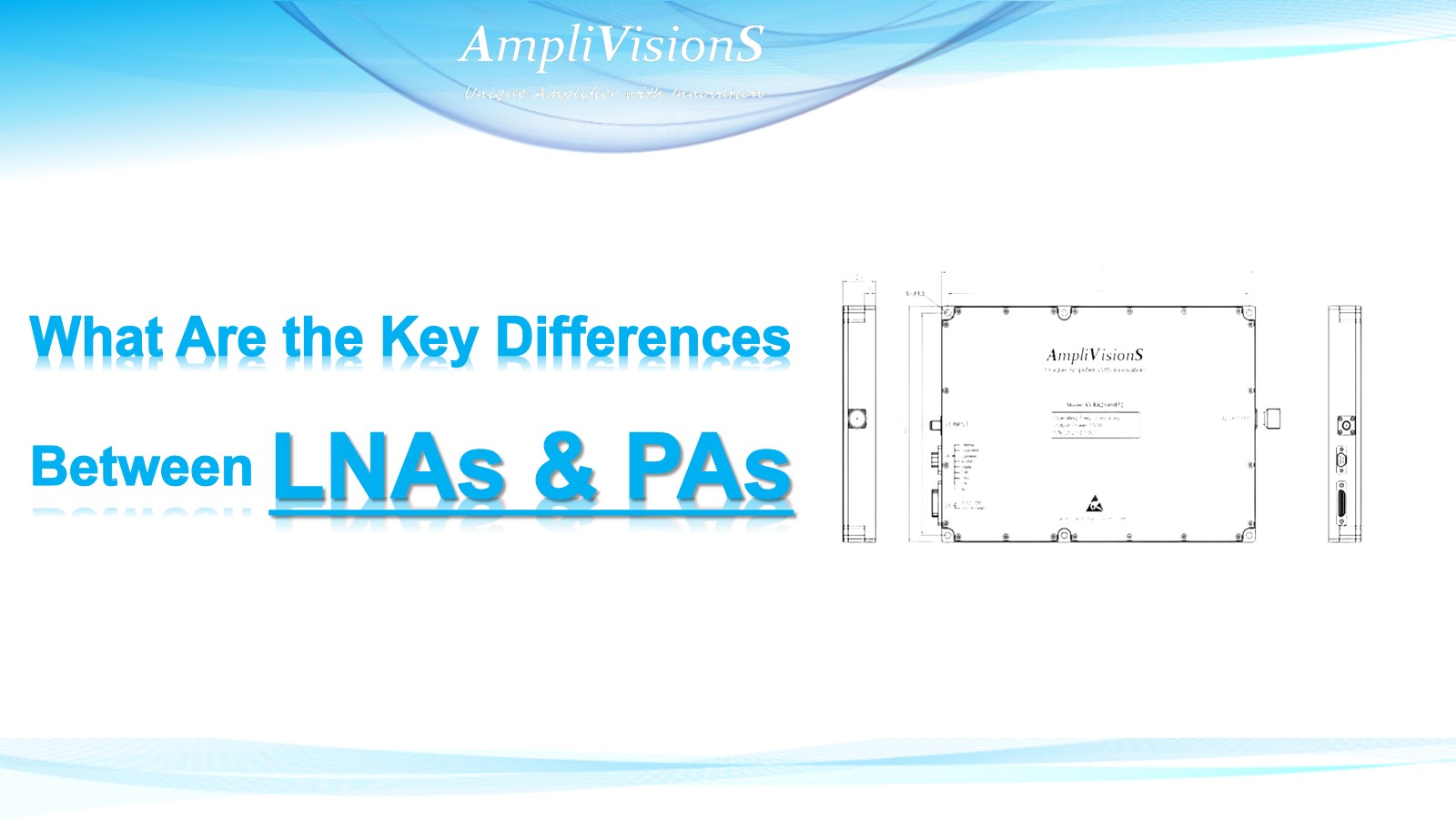NEWS
What Are the Key Differences Between LNAs and PAs?
- Categories:News
- Author:AmpliVisionS
- Origin:AmpliVisionS
- Time of issue:2024-03-29
- Views:729
(Summary description)LNAs are designed to amplify low-intensity signals with minimal noise contribution, resulting in lower gain typically measured in tens of decibels. In contrast, PAs are optimized for higher gain, often exceeding tens of decibels, to fulfill transmission or driving needs.
What Are the Key Differences Between LNAs and PAs?
(Summary description)LNAs are designed to amplify low-intensity signals with minimal noise contribution, resulting in lower gain typically measured in tens of decibels. In contrast, PAs are optimized for higher gain, often exceeding tens of decibels, to fulfill transmission or driving needs.
- Categories:News
- Author:AmpliVisionS
- Origin:AmpliVisionS
- Time of issue:2024-03-29
- Views:729
Exploring the Key Differences Between Low Noise Amplifiers and Power Amplifiers in RF Systems
Low Noise Amplifiers (LNAs) and Power Amplifiers (PAs) are essential components in wireless communication and RF systems, each serving distinct functions and playing crucial roles in enhancing the performance and ensuring communication quality of modern electronic devices.

Understanding LNA Functionality: LNAs primarily amplify input signals, especially those originating from antennas or other low-intensity signal sources. Their design aims to maximize the amplification of weak signals and improve the signal-to-noise ratio. Consequently, LNAs are typically placed at the front end of the receiver chain to amplify signals for subsequent processing and demodulation. One of their key objectives is to minimize their own noise contribution to ensure signal clarity and accuracy.
Exploring the Role of PAs: In contrast, the main function of Power Amplifiers (PAs) is to enhance the power level of signals, enabling them to drive larger loads or transmit over longer distances. PAs are typically used in the transmission chain to amplify signals from modulators or other signal sources for transmission to target devices or receivers. The primary goal of PAs is to provide sufficient power gain to meet specific transmission requirements.
Comparing Gain and Output Power: In terms of gain, LNAs typically have lower gain, usually in the range of tens of decibels. This is because their primary task is to amplify low-intensity signals, requiring minimal noise contribution. Conversely, PAs often have higher gain, reaching tens of decibels or higher, to meet transmission or driving requirements.
Assessing Noise Figure: LNAs aim to minimize their own noise contribution, thus typically having lower noise figures, usually in a few decibels. On the other hand, PAs usually have higher noise figures because their primary goal is to provide power gain rather than maintain the signal's noise level.
Highlighting Amplifier Applications: Moreover, the power output is also a significant point of differentiation between the two. LNAs have lower power output, typically ranging from milliwatts (mW) to tens of milliwatts (mW). In contrast, PAs have higher power output, reaching several watts (W) or higher, to meet the requirements for transmitting over long distances or driving large loads.
In conclusion, LNAs and PAs exhibit distinct differences in functionality, gain, noise figure, and power output. They play different roles in wireless communication, RF systems, and other electronic devices, catering to various application scenarios. Through proper design and application, these two amplifier types complement each other, collectively building stable and efficient communication systems, driving the development and application of wireless technology.
Scan the QR code to read on your phone
Recommended
Applications
AmpliVisionS
Tell:+86(28)61892455
E-mail:sales@amplivisions.com
Address:611731, 22 XinWen Road, High-Tech (West) Zone,
Chengdu City, P.R. China
底部联系方式
The website and its content is copyright of AmpliVisionS. All rights reserved. 蜀ICP备2021033373号-1
